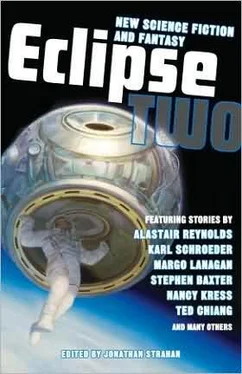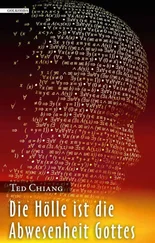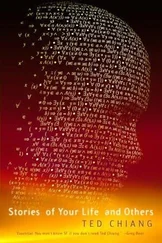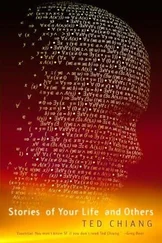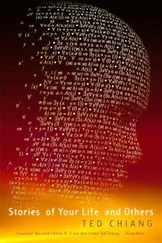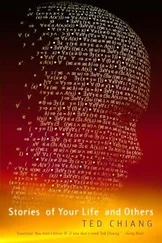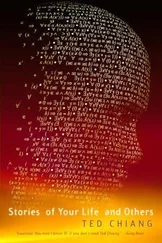It has long been said that air (which others call argon) is the source of life. This is not in fact the case, and I engrave these words to describe how I came to understand the true source of life and, as a corollary, the means by which life will one day end.
For most of history, the proposition that we drew life from air was so obvious that there was no need to assert it. Every day we consume two lungs heavy with air; every day we remove the empty ones from our chest and replace them with full ones. If a person is careless and lets his air level run too low, he feels the heaviness of his limbs and the growing need for replenishment. It is exceedingly rare that a person is unable to get at least one replacement lung before his installed pair runs empty; on those unfortunate occasions where this has happened-when a person is trapped and unable to move, with no one nearby to assist him-he dies within seconds of his air running out.
But in the normal course of life, our need for air is far from our thoughts, and indeed many would say that satisfying that need is the least important part of going to the filling stations. For the filling stations are the primary venue for social conversation, the places from which we draw emotional sustenance as well as physical. We all keep spare sets of full lungs in our homes, but when one is alone, the act of opening one's chest and replacing one's lungs can seem little better than a chore. In the company of others, however, it becomes a communal activity, a shared pleasure.
If one is exceedingly busy, or feeling unsociable, one might simply pick up a pair of full lungs, install them, and leave one's emptied lungs on the other side of the room. If one has a few minutes to spare, it's simple courtesy to connect the empty lungs to an air dispenser and refill them for the next person. But by far the most common practice is to linger and enjoy the company of others, to discuss the news of the day with friends or acquaintances and, in passing, offer newly filled lungs to one's interlocutor. While this perhaps does not constitute air sharing in the strictest sense, there is camaraderie derived from the awareness that all our air comes from the same source, for the dispensers are but the exposed terminals of pipes extending from the reservoir of air deep underground, the great lung of the world, the source of all our nourishment.
Many lungs are returned to the same filling station the next day, but just as many circulate to other stations when people visit neighboring districts; the lungs are all identical in appearance, smooth cylinders of aluminum, so one cannot tell whether a given lung has always stayed close to home or whether it has traveled long distances. And just as lungs are passed between persons and districts, so are news and gossip. In this way one can receive news from remote districts, even those at the very edge of the world, without needing to leave home, although I myself enjoy traveling. I have journeyed all the way to the edge of the world, and seen the solid chromium wall that extends from the ground up into the infinite sky.
It was at one of the filling stations that I first heard the rumors that prompted my investigation and led to my eventual enlightenment. It began innocently enough, with a remark from our district's public crier. At noon of the first day of every year, it is traditional for the crier to recite a passage of verse, an ode composed long ago for this annual celebration, which takes exactly one hour to deliver. The crier mentioned that on his most recent performance, the turret clock struck the hour before he had finished, something that had never happened before. Another person remarked that this was a coincidence, because he had just returned from a nearby district where the public crier had complained of the same incongruity.
No one gave the matter much thought beyond the simple acknowledgement that seemed warranted. It was only some days later, when there arrived word of a similar deviation between the crier and the clock of a third district, that the suggestion was made that these discrepancies might be evidence of a defect in the mechanism common to all the turret clocks, albeit a curious one to cause the clocks to run faster rather than slower. Horologists investigated the turret clocks in question, but on inspection they could discern no imperfection. In fact, when compared against the timepieces normally employed for such calibration purposes, the turret clocks were all found to have resumed keeping perfect time.
I myself found the question somewhat intriguing, but I was too focused on my own studies to devote much thought to other matters. I was and am a student of anatomy, and to provide context for my subsequent actions, I now offer a brief account of my relationship with the field.
Death is uncommon, fortunately, because we are durable and fatal mishaps are rare, but it makes difficult the study of anatomy, especially since many of the accidents serious enough to cause death leave the deceased's remains too damaged for study. If lungs are ruptured when full, the explosive force can tear a body asunder, ripping the titanium as easily as if it were tin. In the past, anatomists focused their attention on the limbs, which were the most likely to survive intact. During the very first anatomy lecture I attended a century ago, the lecturer showed us a severed arm, the casing removed to reveal the dense column of rods and pistons within. I can vividly recall the way, after he had connected its arterial hoses to a wall-mounted lung he kept in the laboratory, he was able to manipulate the actuating rods that protruded from the arm's ragged base, and in response the hand would open and close fitfully.
In the intervening years, our field has advanced to the point where anatomists are able to repair damaged limbs and, on occasion, attach a severed limb. At the same time we have become capable of studying the physiology of the living; I have given a version of that first lecture I saw, during which I opened the casing of my own arm and directed my students' attention to the rods that contracted and extended when I wiggled my fingers.
Despite these advances, the field of anatomy still had a great unsolved mystery at its core: the question of memory. While we knew a little about the structure of the brain, its physiology is notoriously hard to study because of the brain's extreme delicacy. It is typically the case in fatal accidents that, when the skull is breached, the brain erupts in a cloud of gold, leaving little besides shredded filament and leaf from which nothing useful can be discerned. For decades the prevailing theory of memory was that all of a person's experiences were engraved on sheets of gold foil; it was these sheets, torn apart by the force of the blast, that was the source of the tiny flakes found after accidents. Anatomists would collect the bits of gold leaf-so thin that light passes greenly through them-and spend years trying to reconstruct the original sheets, with the hope of eventually deciphering the symbols in which the deceased's recent experiences were inscribed.
I did not subscribe to this theory, known as the inscription hypothesis, for the simple reason that if all our experiences are in fact recorded, why is it that our memories are incomplete? Advocates of the inscription hypothesis offered an explanation for forgetfulness-suggesting that over time the foil sheets become misaligned from the stylus which reads the memories, until the oldest sheets shift out of contact with it altogether-but I never found it convincing. The appeal of the theory was easy for me to appreciate, though; I too had devoted many an hour to examining flakes of gold through a microscope, and can imagine how gratifying it would be to turn the fine adjustment knob and see legible symbols come into focus.
Читать дальше
